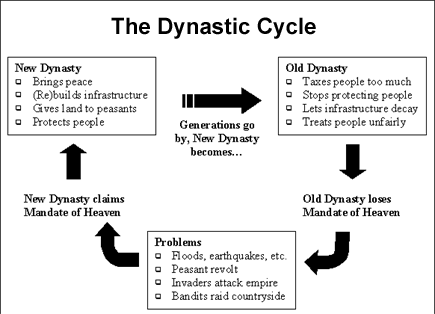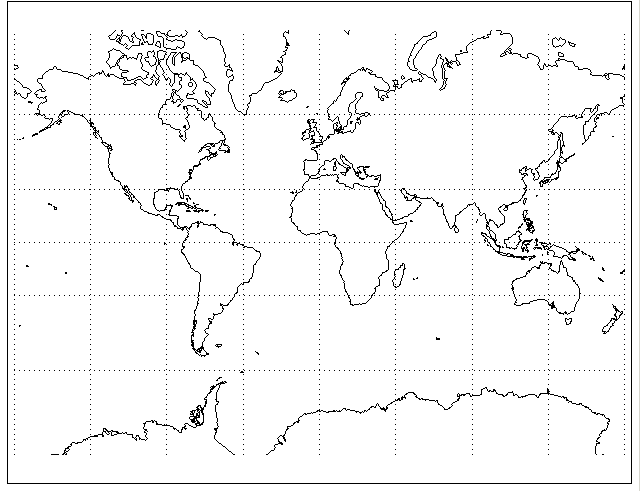Global Studies Midterm Exam Review

For my review. . . . . .
- 1.
Nomad
- A.
The territories ruled by ancient Rome which at one time encompassed most of the Mediterranean world and parts of France, England, and Germany. The empire lasted from 27 BCE to 395 CE.
- B.
A person who belongs to a group of people who move from place to place seasonally in search of food and water.
- C.
A society that has a high level of culture and social organization including organized government, job specialization, and a organized belief system.
- D.
A person who is skilled at a craft, such as weaving, or woodcarving.
Correct Answer
B. A person who belongs to a group of people who move from place to place seasonally in search of food and water.Explanation
The correct answer is "A person who belongs to a group of people who move from place to place seasonally in search of food and water." This answer accurately describes the definition of a nomad, which refers to individuals or groups of people who do not have a permanent settlement and instead travel from one place to another in search of resources such as food and water. This lifestyle is common among certain indigenous or traditional communities. The other options provided in the question do not match the definition of a nomad.Rate this question:
-
- 2.
Silk Road
- A.
A person who specializes in the study of astronomical bodies.
- B.
A hard, fine ceramic material used to make a variety of products.
- C.
Trade route from China to the Middle East.
- D.
Political ruler of a country of nation. Similar to a king.
Correct Answer
C. Trade route from China to the Middle East.Explanation
The correct answer is "Trade route from China to the Middle East." This is because the Silk Road was a historical trade route that connected China with the Middle East and other regions. It facilitated the exchange of goods, ideas, and cultures between these regions during ancient times. The other options mentioned in the question, such as a person specializing in the study of astronomical bodies, a hard ceramic material, and a political ruler, are unrelated to the Silk Road.Rate this question:
-
- 3.
Where is this used?
- A.
Japan
- B.
Rome
- C.
China
- D.
Gupta
Correct Answer
C. ChinaExplanation
This question is asking about the location where something is used. The correct answer is "China," indicating that whatever is being referred to is used in China.Rate this question:
-
- 4.
The Qur'an is?
- A.
Islamic holy book.
- B.
A Mesoamerican civilization of Central America and southern Mexico. Achievements include mathematics, architecture, and a 365 day a year calendar. They flourished between the 4th and 12th centuries C.E..
- C.
A record keeping system that used colored, knotted string developed by the Incan Civilization.
- D.
A time in a culture of high achievement in arts, literature, and science. Generally occurs in times of peace.
Correct Answer
A. Islamic holy book. -
- 5.
A collection of nations or peoples ruled by a single authority, usually a monarch, but can be other systems of government as well.
- A.
Hieroglyphics
- B.
City-State
- C.
Culture
- D.
Empire
Correct Answer
D. EmpireExplanation
An empire is a collection of nations or peoples that are governed by a single authority, which is typically a monarch. However, it can also be governed by other systems of government. This ruling authority has control over the various regions and territories within the empire. The term "empire" implies a hierarchical structure, where the ruling authority holds significant power and influence over the subordinate regions. It is a political entity that extends its dominion over a wide area, often incorporating diverse cultures, languages, and territories.Rate this question:
-
- 6.
Which activity occurred during the Golden Age of Muslim culture?
- A.
Destruction of books containing Greek and Roman ideas
- B.
Beginning of pilgrimages to Mecca
- C.
Major discoveries in mathematics and science
- D.
Opposition to freedom of thought and to foreign ideas by rulers
Correct Answer
C. Major discoveries in mathematics and scienceExplanation
During the Golden Age of Muslim culture, there were major discoveries in mathematics and science. This period, which lasted from the 8th to the 14th century, saw significant advancements in various fields such as algebra, astronomy, medicine, and optics. Muslim scholars made important contributions to these disciplines, building upon the knowledge of ancient Greek, Roman, and Indian civilizations. They translated and preserved many classical texts, leading to new discoveries and innovations. This era was characterized by a flourishing intellectual and cultural environment, where scholars from different backgrounds collaborated and exchanged ideas, resulting in significant advancements in mathematics and science.Rate this question:
-
- 7.
The contributions of the Golden Age of Islamic civilization include
- A.
Advances in mathematics
- B.
Irrigation systems
- C.
Polytheistic beliefs
- D.
Gunpowder and guns
Correct Answer
A. Advances in mathematicsExplanation
The Arab World contributed greatly to modern science and mathematics during the Golden Age of Islam.Rate this question:
-
- 8.
One reason for the development of an early civilization in the Tigris-Euphrates river valleys was that
- A.
The location protected the people from land invasion
- B.
Periodic flooding left rich soil, which was ideal for farming
- C.
These rivers provided a direct trade route between Europe and Asia
- D.
These rivers flowed into the Mediterranean Sea
Correct Answer
B. Periodic flooding left rich soil, which was ideal for farmingExplanation
Flowing rivers deposit fresh silt along their banks from areas upstream. When these rivers overflow, the silt pours onto the land providing rich soil ideal for farming.Rate this question:
-
- 9.
Which characteristic did the early civilizations that developed along the Nile, the Tigris-Euphrates and the Huang He (Yellow River) have in common?
- A.
Each society’s religious beliefs were based on monotheism
- B.
Urban communities were built using iron and steel tools
- C.
The form of government in each community was based on male suffrage
- D.
Transportation and communication were promoted by a mild climate, fertile soil, and natural waterways
Correct Answer
D. Transportation and communication were promoted by a mild climate, fertile soil, and natural waterwaysExplanation
All of these early river civilizations benefited from increased transportation and communication due to their location on rivers in mild climate regions.Rate this question:
-
- 10.
The early civilizations of the Nile River Valley, Mesopotamia, and the Yellow River Valley were similar because they were
- A.
Industrialized societies
- B.
Monotheistic
- C.
Dependent on fertile land
- D.
Dependent on each other for trade
Correct Answer
C. Dependent on fertile landExplanation
In order for civilization to develop in these areas, an agricultural surplus was need to provide for the needs of the humans living there.Rate this question:
-
- 11.
One way in which the civilizations of the Sumerians, the Phoenicians, and the Maya were similar is that each
- A.
Developed extensive writing systems
- B.
Emphasized equality in education
- C.
Established monotheistic religions
- D.
Encouraged democratic participation in government
Correct Answer
A. Developed extensive writing systemsExplanation
Each of the civilizations developed extensive writing systems. The Sumerians developed the first known writing system, cuneiform, which was pictographic in nature. The Phoenicians developed an alphabet made of letters which could be combined to form words. Later, this Phoenician language was adopted by the Greeks and the Romans, and became the basis for many modern European languages.Rate this question:
-
- 12.
What Map Projection?This projection shows direction accurately, but it distorts size, especially away from the equator. Land masses near the North and South poles appear to be much larger than they really are. Sailors favor this projection because determining direction is the most important part of plotting a ship's course.
- A.
Polar Projection
- B.
Robinson Projection
- C.
Goode's Interrupted Projection
- D.
Mercator Projection
Correct Answer
D. Mercator ProjectionExplanation
Polar Projection (equidistant)-This projection is drawn from above either the North Pole or the South Pole. Size and shape are fairly true near the center of the map but become distorted the farther a landmass is from the pole. Airplane pilots prefer this projection.
Robinson-most textbook maps
Goode's Interrupted Projection (equal-area)-An equal-area projection accurately shows the relative sizes of land and water areas.Rate this question:
-
- 13.
Notre Dame Cathedral in Paris, the Dome of the Rock in Jerusalem and the Great Pyramid in Egypt are examples of
- A.
Architectural accomplishments that reflect religious beliefs
- B.
The influence of Buddhist architecture on conquered nations
- C.
Ancient architectural monuments no longer in use
- D.
The influence of cultural diffusion on contemporary architecture
Correct Answer
A. Architectural accomplishments that reflect religious beliefsExplanation
Each of these architectural examples are religious in nature and thus reflect the religious beliefs of those societies that built them.Rate this question:
-
- 14.
According the teachings of Confucius, the key to the successful organization of society is that
- A.
The ruler should be chosen democratically
- B.
The evil in humans must be eliminated
- C.
Ancestor worship should be discontinued
- D.
Individuals should know and do what is expected of them
Correct Answer
D. Individuals should know and do what is expected of themExplanation
According to the teachings of Confucius, the key to the successful organization of society is that individuals should know and do what is expected of them. Confucius emphasized the importance of fulfilling one's roles and responsibilities within society. He believed that individuals should cultivate virtues such as filial piety, loyalty, and righteousness, and should strive to fulfill their obligations to their family, community, and ruler. By understanding and fulfilling their expected duties, individuals contribute to the harmony and stability of society as a whole.Rate this question:
-
- 15.
The Analects:“In his [the leader] personal conduct, he was respectful. In his serving his superiors, he was reverent. In his nourishing the people, he was kind. In governing the people, he was righteous.” — ConfuciusThese selections show that the ancient civilizations who developed these concepts placed emphasis on
- A.
Trade
- B.
Law
- C.
Anarchy
- D.
Architecture
Correct Answer
B. LawExplanation
Confucianism teaches that society needs to be ordered. In such a society, individuals should know and do what is expected of them, and a follow a code of moral conduct.Rate this question:
-
Quiz Review Timeline +
Our quizzes are rigorously reviewed, monitored and continuously updated by our expert board to maintain accuracy, relevance, and timeliness.
-
Current Version
-
Mar 21, 2023Quiz Edited by
ProProfs Editorial Team -
Jan 31, 2011Quiz Created by
Junikp3
- Academic Quizzes
- Adult Learning Quizzes
- Blended Learning Quizzes
- Career Quizzes
- Coaching Quizzes
- College Quizzes
- Communication Quizzes
- Curriculum Quizzes
- Distance Learning Quizzes
- E Learning Quizzes
- Early Childhood Education Quizzes
- GCSE Quizzes
- Grade Quizzes
- Graduation Quizzes
- Kindergarten Quizzes
- Knowledge Quizzes
- Literacy Quizzes
- Online Assessment Quizzes
- Online Exam Quizzes
- Online Test Quizzes
- Physical Education Quizzes
- Qualification Quizzes
- Religious Education Quizzes
- School Quizzes
- Subject Quizzes
- Teaching Quizzes
- Theory Quizzes
- Thesis Quizzes
- University Quizzes
 Back to top
Back to top



